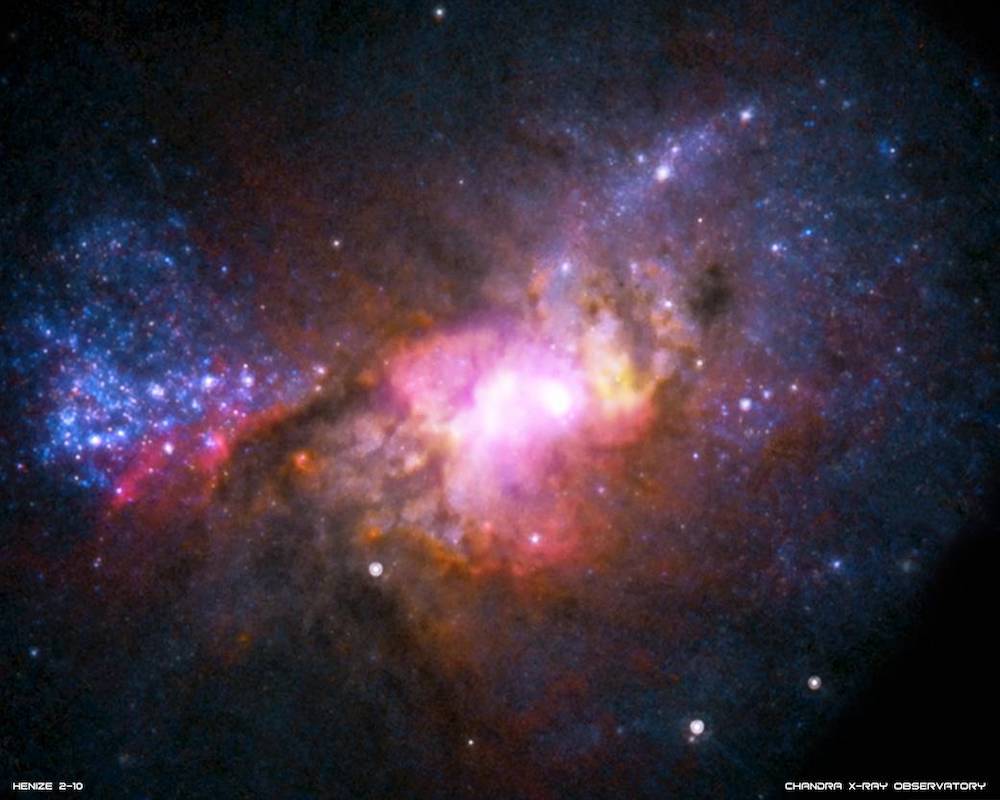Create a free profile to get unlimited access to exclusive videos, sweepstakes, and more!
We’re seeing a galaxy as it was just after the dawn of the universe, and it has water
The most massive galaxy that existed in the early universe has the oldest water molecules in the universe.

From Earth, observing a galaxy that is 12.88 billion light years away means seeing it just as it was that many years ago, not long (at least in cosmic terms) after the universe itself emerged.
Even starter galaxies can be overflowing with water molecules. New research has detected abundant water and carbon monoxide in SPT0311, the most massive known galaxy that existed in the early universe. That space water is made of what are now the most distant water molecules ever detected. The molecular universe had evidently put its foot on the gas after nuclear fusion in the first stars created the elements found in these molecules.
The hi-res vision of ALMA (Atacama Large Millimeter Array) could make out immense amounts of water and carbon monoxide in SPT0311. Water was used to get an idea of star formation because it can absorb stellar UV radiation and then re-emit it as far-infrared photons, which revealed its presence in the galaxy. Astronomer Sreevani Jarugula of the University of Illinois led a study, recently published in The Astrophysical Journal, which peers into the deep past.
“The dust in galaxies is mainly composed of silicates and other carbon compounds,” Jarugula told SYFY WIRE. “It is heated by the UV radiation from stars through a process known as absorption. The heated dust grains then emit radiation following a modified law of physics known as grey body radiation.”
To get an idea of gray body radiation, you have to understand black body radiation. Max Planck theorized a black body to be an ideal object that absorbs all random electromagnetic radiation around it, then emits the maximum amount of thermal radiation. A gray body is an imperfect black body that partially absorbs surrounding radiation. Earth would be an inhospitable place without thermal radiation. It is the only type of heat transfer — from fire to lightbulbs — that doesn’t need a heat conductor. The planet would be heavily irradiated by the Sun without it.
When grey body radiation peaks depends on dust properties such as temperature, particle size, grain distribution, orientation, and emissivity, or the ratio of a gray body’s thermal radiation to that of a theoretical black body at the same temperature. UV radiation that is emitted again by dust particles as far-infrared radiation excites water molecules because of infrared pumping. This is the process by which the electrons in H2O molecules reconfigure themselves temporarily in a higher-energy state before calming down to a lower state and releasing all that energy.
“Because of absorption and re-emission, we can estimate the star formation rate through water observations because H2O emission is correlated with far-infrared radiation through this infrared pumping mechanism,” said Jarugula. “Estimating star formation rates depends on infrared radiation intensity.”
Though Jarugula thinks further observations are needed to look into the relationship between water and star formation, being able to see what was going on that far back in time through space dust is almost unreal. Enormous quantities of gas are also unavoidable in nascent galaxies. It is out of this gas and dust that stellar bodies form, which shouldn’t be surprising considering that a star’s main power source, hydrogen, is the most plentiful element in the universe in its molecular form, H2. It can’t be directly observed — but there is a way around that.
It is possible to indirectly figure out about how much hydrogen is in a region because of carbon monoxide, or CO, emissions. These are the aftermath of CO and H2 molecules smashing into each other. Plugging CO observations into computer models can also tell researchers about properties of a galaxy such as its mass, temperature, and gas density. Water and carbon monoxide could give us more insight into the evolution of early galaxies, especially since the same processes that happen in entire galaxies also happen in planetary discs.
Jarugula is especially anxious for the James Webb Space Telescope (JWST) to start making observations, because its next-gen instruments may be able to see things we could only guess at before in both our galaxy and galaxies far, far away.
“There is a lot of exciting science coming out of studying young stellar objects,” she said. “With the upcoming telescopes such as JWST, we can dig deeper into the properties of dust and gas to help us understand life as we know it.”


























